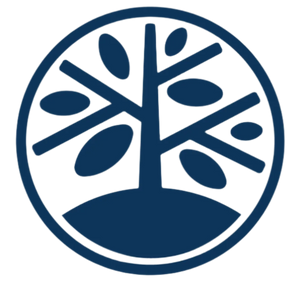As the demand for sustainable and high-performance materials grows, VPR Plastic stands out as a next-generation polymer combining strength, flexibility, and eco-friendly properties. By integrating vitrimer networks with polyrotaxane, this innovative plastic delivers self-healing capability, shape memory, and partial biodegradability. This article will explain what VPR Plastic is, how it is developed, its key properties, and the potential applications that make it a game-changer in material science.
Which Number Plastic Bottles Are Safe for Drinking Water?
What is VPR Plastic?
VPR Plastic is an advanced polymeric material composed of Vitrimer (a type of dynamic covalent network polymer) and Polyrotaxane (a supramolecular polymer structure). This hybrid material leverages the dynamic bond exchange of vitrimer networks and the sliding mechanism of polyrotaxane components, resulting in a plastic that is:
-
Stronger and more stretchable
-
Self-healing under heat
-
Capable of shape memory
-
Partially biodegradable
This unique combination addresses many limitations of conventional plastics, including brittleness, lack of reparability, and environmental concerns.

Vitrimer and Polyrotaxane: Key Components
Vitrimer Overview
Vitrimers are a category of covalently crosslinked polymers featuring dynamic associative bond exchange reactions. Unlike traditional thermosets, vitrimers can reshape, heal, or recycle without losing their mechanical integrity, thanks to the reversibility of their chemical bonds under thermal stimuli.
Key characteristics of vitrimers:
-
Reprocessability
-
Self-healing ability
-
Excellent mechanical strength
-
Resistance to creep deformation
What is Polyrotaxane?
Polyrotaxane is a supramolecular polymer structure where multiple cyclic molecules (such as cyclodextrins) are threaded onto a linear polymer chain, capped at both ends. This architecture allows the rings to slide freely along the chain without detaching, creating a material with high flexibility, durability, and energy dissipation properties.
How is VPR Plastic Developed?
The innovation behind VPR Plastic lies in the molecular-level integration of polyrotaxane into an epoxy resin vitrimer matrix.
Synthesis Process
-
Polyrotaxane Grafting:
Polyrotaxane is chemically modified by grafting polyester chains onto its cyclic molecules. -
Dynamic Crosslinking:
The modified polyrotaxane is blended into an epoxy resin vitrimer system. The hydroxyl groups of polyrotaxane react with ester bonds in the vitrimer matrix through transesterification reactions, resulting in a uniform dispersion of polyrotaxane within the vitrimer network. -
Curing and Structuring:
Upon curing, a dynamic crosslinked network is formed, capable of rearranging under heat and enabling the unique features of VPR Plastic.
Outstanding Properties of VPR Plastic
Superior Mechanical Performance
In tensile strength tests, VPR Plastic exhibits:
-
5.3 times higher tensile strength compared to vitrimer without polyrotaxane.
-
Significantly increased elongation at break, indicating improved flexibility.
These improvements result from the sliding motion of polyrotaxane, which dissipates energy under stress and prevents crack propagation.
Self-Healing Ability
One of the standout features of VPR Plastic is its ability to self-heal:
-
When damaged, the material can recover its mechanical properties after heating at 150°C for 1 hour.
-
This is achieved through the dynamic exchange of ester bonds and the sliding mechanism of polyrotaxane, which allows broken networks to reconnect.
Shape Memory Behavior
VPR Plastic demonstrates excellent shape memory performance:
-
It can fix a temporary shape and recover to its original shape upon heating.
-
This property opens new avenues in the design of smart devices, wearable electronics, and adaptive structures.
Partial Biodegradability
Environmental sustainability is a critical advantage of VPR Plastic:
-
In controlled marine conditions, VPR Plastic showed 25% biodegradation after 30 days.
-
This is a substantial improvement over conventional plastics and suggests a pathway toward more eco-friendly material solutions.
Potential Applications of VPR Plastic
The advanced properties of VPR Plastic make it an ideal candidate for a wide range of applications:
Engineering and Manufacturing
-
Structural components requiring high durability and reparability
-
Automotive and aerospace parts benefiting from self-healing and recyclability
Medical Devices
-
Implants and prosthetics with shape memory and self-repairing features
-
Flexible, durable medical equipment with extended lifecycle
Sustainable Fashion
-
Smart textiles and accessories that can change shape or repair themselves
-
Eco-friendly clothing materials with partial biodegradability
Electronics and Soft Robotics
-
Flexible circuits and wearable electronics with increased longevity
-
Soft robotic components requiring dynamic mechanical properties
Kimecopak’s Eco Packaging That is Safe for Ocean
In actuality, it is now critical to reduce plastic waste and use sustainable materials. For food industries, Kimecopak offers eco-friendly packaging solutions. These items strive to reduce dependence on plastics and their impact on the environment, notably the marine environment. In particular:
- Paper To-go-Box: These compostable and biodegradable food containers are made of bamboo fiber, sugarcane, and kraft paper. This means that it degrades gradually, doesn't leak chemicals into the environment, and has a smaller effect on living things.
Click to find your suitable Food Packaging
- Biodegradable Straw: Available in a variety of sizes, Kimecopak's straws are composed of non-toxic materials such as sugarcane, bamboo, and bioplastic.
Click to see more about Biodegradable Straw
- Wooden Cutlery: Kimecopak's biodegradable and compostable bamboo and birchwood spoons, knives, sporks, and forks are among the items in this category. This product is entirely safe for the environment and does not include plastic.
See more about how its advantages to the environment at Disposable Cutlery
- Biodegradable Beer Rings: Our beer rings, which come in 4- and 6-pack sizes, are manufactured entirely of sugarcane pulp and are environmentally safe.
Learn more about our Biogegradable Beer Rings
- Disposable Plates: Made from sugarcane waste, Kimecopak's disposable plate products are safe for the marine environment, biodegradable, and compostable.
Learn more about the Disposable Plates Canada
Conclusion
VPR Plastic represents a significant advancement in polymer science, bridging the gap between high-performance plastics and environmental sustainability. Its unique combination of mechanical strength, flexibility, self-healing capability, and partial biodegradability positions it as a leading material for future innovations in engineering, healthcare, electronics, and sustainable fashion.









